Jeom Kee Paik, Anil Kumar Thayamballi0521859212, 9780521859219, 9780511296383
Table of contents :
Cover……Page 1
Half-title……Page 3
Title……Page 5
Copyright……Page 6
Contents……Page 7
Preface……Page 17
Acknowledgments……Page 21
How to Use This Book……Page 23
1.1.2 History from World War II to the Early 1970s……Page 27
1.1.3 History after the Early 1970s……Page 28
1.2 Process of Offshore Oil and Gas Developments……Page 29
1.3 System Concepts for Deep- and Ultradeep-Water Field Developments……Page 30
1.3.1 Semisubmersibles……Page 31
1.3.2 Spars……Page 32
1.3.4 Ship-Shaped Offshore Units……Page 33
1.4 A Brief History of the FPSO Installations……Page 35
1.5 Trading Tankers versus Ship-Shaped Offshore Units……Page 39
1.6 New Build versus Tanker Conversion……Page 41
1.7.2 Layout……Page 42
1.7.3 Relationships between Principal Dimensions……Page 45
1.7.5 Tank Design and Arrangements……Page 48
1.8 Longitudinal Strength Characteristics of FPSO Hulls……Page 49
1.9 Drawings of a Hypothetical FPSO……Page 50
1.10 Aims and Scope of This Book……Page 54
REFERENCES……Page 55
2.1 Introduction……Page 57
2.2 Initial Planning and Contracting Strategies……Page 58
2.3 Engineering and Design……Page 59
2.5 Selection of Storage, Production, and Offloading Capabilities……Page 60
2.6 Site-Specific Metocean Data……Page 61
2.8 Limit-State Design Requirements……Page 62
2.9 Risk-Assessment Requirements……Page 63
2.10 Project Management……Page 64
2.12 Building Material Issues: Yield Stress……Page 65
2.13 Building Material Issues: Fracture Toughness……Page 67
2.14 Hull Structural Scantling Issues……Page 68
2.15 Action-Effect Analysis Issues……Page 69
2.16 Fatigue Design Issues……Page 70
2.18 Vessel Motion and Station-Keeping Issues……Page 71
2.19 Topsides Design Issues……Page 72
2.21 Export System Design Issues……Page 73
2.23 Accommodation Design Issues……Page 74
2.25 Equipment Testing Issues……Page 75
2.27 Field Installation and Commissioning Issues……Page 76
2.28 Inspection and Maintenance Issues……Page 77
2.29 Regulations and Classing Issues……Page 78
REFERENCES……Page 79
3.2 Structural Design Principles……Page 81
3.2.2 Limit-State Design……Page 82
3.2.3 Critical Buckling Strength Design……Page 83
3.2.4 Comparison among the Three Design Methods……Page 86
3.4.1 Probabilistic Format……Page 91
3.4.2 Partial Safety Factor Format……Page 93
3.4.3 Considerations Related to Safety Factors……Page 94
3.5 Unified Design Requirements for Trading Tanker Hull Structures……Page 97
3.7 Design Principles for Towing and Station-Keeping……Page 100
3.9.1 Design Principles for Safety……Page 101
3.9.3 Design Principles for the Environment……Page 103
3.10 Regulations, International Standards, and Recommended Practices……Page 104
REFERENCES……Page 106
4.1 Introduction……Page 108
4.2 Environmental Data……Page 109
4.3 Waves……Page 110
4.3.1 UKOOA FPSO Design Guidance Notes for UKCS Service……Page 111
4.3.3 Det Norske Veritas Classification Notes……Page 112
4.4 Winds……Page 114
4.6 Currents……Page 117
4.8 Snow and Icing……Page 119
4.9 Marine Growth……Page 121
4.10.2 Practices for Sloshing Assessment……Page 122
4.11.2 Practices for Bow-Slamming Assessment……Page 125
4.12.1 Fundamentals……Page 126
4.12.2 Practices for Green-Water Assessment……Page 127
4.12.3 Measures for Green-Water Risk Mitigation……Page 128
4.13 Considerations Related to the Return Period……Page 129
4.14.1 The Generalized Pierson–Moskowitz Spectrum……Page 131
4.14.3 Directional Wave Spectra……Page 132
REFERENCES……Page 133
5.1 Introduction……Page 137
5.2 Design Principles and Criteria……Page 138
5.3 Practices for Actions and Action-Effects Analysis……Page 139
5.4.1 Support Members……Page 140
5.5 Elastic Buckling Limits……Page 144
5.5.1 Elastic Plate Buckling……Page 146
5.5.2 Elastic Stiffener Web Buckling……Page 149
5.5.3 Elastic Tripping of Stiffener……Page 151
5.6 Permanent Set Deflection Limits: Under Impact-Pressure Actions……Page 154
5.6.1 Plates between Support Members……Page 155
5.6.2 Longitudinally Stiffened Panels between Transverse Frames……Page 157
5.6.3 Cross-Stiffened Plate Structures……Page 158
5.6.4 Illustrative Examples……Page 159
5.7 Intact Vessel Stability……Page 160
5.8 Vessel Station-Keeping……Page 163
5.9 Vessel Weathervaning and Heading Control……Page 165
5.10 Vessel Motion Exceedance……Page 166
5.11 Vibration and Noise……Page 167
5.12 Mooring Line Vortex-Induced Resonance Oscillation……Page 169
REFERENCES……Page 171
6.2 Design Principles and Criteria……Page 174
6.3 Actions and Action-Effects Analysis……Page 176
6.4 Structural Component Configuration……Page 177
6.5.1 Fundamentals……Page 179
6.5.2 Closed-Form Expressions……Page 180
6.5.3 Analytical Methods……Page 185
6.5.4 Semianalytical Methods……Page 190
6.5.5 Nonlinear Finite-Element Methods……Page 192
6.6.1 Fundamentals……Page 194
6.6.3 Analytical Methods……Page 199
6.6.4 Semianalytical Methods……Page 201
6.6.5 Nonlinear Finite-Element Methods……Page 203
6.6.6 Illustrative Examples……Page 206
6.7.2 Closed-Form Expressions……Page 208
6.7.3.1 Background of Idealized Structural Unit Method……Page 211
6.7.3.2 ISUM Structural Modeling……Page 213
6.7.3.3 ISUM Plate Element……Page 214
6.7.3.4 ISUM Beam-Column Element……Page 221
6.7.3.5 Illustrative Examples……Page 227
REFERENCES……Page 241
7.1 Introduction……Page 243
7.2 Design Principles and Criteria……Page 244
7.2.1 Cyclic Stress Ranges……Page 247
7.2.2 S–N Curves……Page 249
7.2.3 Fatigue Damage Accumulation……Page 251
7.3 Practices for Spectral-Analysis-Based FLS Design……Page 252
7.4 Seakeeping Analysis……Page 258
7.5 Stress Range Transfer Functions……Page 262
7.6 Global Structural Analysis……Page 263
7.7.1 Definition of Hot Spot Stress……Page 264
7.7.2 Finite-Element Analysis Modeling……Page 267
7.8 Selection of S–N Curves……Page 269
7.9 Fatigue Damage Calculations……Page 271
7.11 Time-Variant Fatigue Crack Propagation Models……Page 276
REFERENCES……Page 280
8.2 Design Principles and Criteria……Page 283
8.3 Damaged Vessel Stability: Accidental Flooding……Page 285
8.4.1 Fundamentals……Page 287
8.4.2 Practices for Collision Assessment……Page 289
8.4.3 Nonlinear Finite-Element Modeling Techniques……Page 291
8.4.4 Dynamic Material Properties……Page 297
8.4.5 Illustrative Examples……Page 300
8.5.1 Fundamentals……Page 303
8.5.2.1 Under Axial Compressive Loads……Page 307
8.5.2.2 Under Edge Shear Loads……Page 313
8.5.3.1 Under Axial Compressive Loads……Page 319
8.6.1 Fundamentals……Page 322
8.6.2 Practices for Fire Assessment……Page 323
8.7.1 Fundamentals……Page 325
8.7.2.1 Prescriptive Methods……Page 327
8.7.2.2 Probabilistic Methods……Page 328
8.7.4 Illustrative Examples……Page 329
8.8 Progressive Collapse of Heeled Hulls with Accidental Flooding……Page 334
REFERENCES……Page 339
9.1 Introduction……Page 344
9.2.1 Oil and Water Separation Facilities……Page 345
9.2.2 Gas Compression Facilities……Page 349
9.2.4 Cargo Handling Systems……Page 350
9.2.5 Utility and Support Systems……Page 351
9.2.6 Safeguard Systems……Page 352
9.3.1 Types of Topsides Supports……Page 353
9.3.1.1 Multipoint Support Columns……Page 354
9.3.1.2 Sliding/Flexible Support Stools……Page 355
9.3.2 Types of Topsides Flooring……Page 356
9.3.3 Types of Topsides Fabrication……Page 357
9.3.4 Structural Analysis of Topsides Modules and Interfaces……Page 358
9.3.5 Interface Management and Other Lessons Learned……Page 359
9.4.1 Types of Moorings……Page 362
9.4.1.1 Spread Moorings……Page 363
9.4.1.2 Single-Point Moorings……Page 364
9.4.2 Mooring System Selection for an FPSO in Deep Water……Page 374
9.4.3 Design Considerations for Mooring Systems……Page 375
9.5.1 Methods of Export……Page 376
9.5.2 Types of Shuttle Tanker Export……Page 377
9.5.3 Design Considerations for Export Systems……Page 378
REFERENCES……Page 380
10.1 Introduction……Page 382
10.2.1 Fundamentals……Page 383
10.2.2 Types of Corrosion……Page 384
10.2.2.1 General Corrosion……Page 385
10.2.2.2 Pitting Corrosion……Page 386
10.2.3 Factors Affecting Corrosion……Page 387
10.3 Mathematical Models for Corrosion Wastage Prediction……Page 390
10.3.1 Overall Behavior of Corrosion……Page 391
10.3.2.1 Corrosion Depth Formulations……Page 392
10.3.2.2 Data Collection of Corrosion Measurements……Page 393
10.3.2.3 Characteristics of Observed Corrosion Wastage……Page 397
10.3.2.4 Annualized Corrosion Rates……Page 400
10.3.3 Phenomenological Models……Page 405
10.4 Options for Corrosion Management……Page 408
10.4.1 Corrosion Margin Addition……Page 409
10.4.2.1 Surface Preparation……Page 412
10.4.2.2 Types of Coating……Page 413
10.4.2.3 Selection Criteria of Coating Material……Page 415
10.4.2.4 Methodologies for Coating-Life Prediction……Page 416
10.4.3 Cathodic Protection……Page 417
10.4.4 Ballast Water Deoxygenation……Page 419
REFERENCES……Page 421
11.1 Introduction……Page 426
11.2 Types of Age-Related Deterioration……Page 427
11.3.1 Corrosion Wastage Examination……Page 428
11.3.2 Fatigue and Other Crack Examination……Page 430
11.3.4 Probability of Detection and Sizing……Page 431
11.4 Recommended Practices for Trading Tankers……Page 432
11.4.1 Condition Assessment Scheme……Page 434
11.4.2 Enhanced Survey Programme……Page 435
11.5 Risk-Based Inspection……Page 437
11.5.1 RBI Team Setup……Page 438
11.5.3 Risk-Based Prioritization……Page 439
11.5.4.2 Scope of Inspection……Page 440
11.5.6 Analysis of Inspection Results……Page 441
11.6 Risk-Based Maintenance……Page 442
11.6.1 Time-Variant Failure Mechanisms……Page 443
11.6.2 Planned Maintenance……Page 445
11.6.5 Failure Finding……Page 447
11.7.1 Inspection Practices……Page 449
11.7.2 Maintenance Practices……Page 451
11.8 Effect of Corrosion Wastage on Plate Ultimate Strength……Page 454
11.9 Effect of Fatigue Cracking on Plate Ultimate Strength……Page 457
11.10 Effect of Time-Variant Age-Related Deterioration on FPSO Hull Ultimate Strength Reliability: An Academic Example……Page 459
11.10.1 Scenario for Sea States and Operational Conditions……Page 460
11.10.2 Scenario for Time-Variant Corrosion Wastage……Page 462
11.10.3 Scenario for Time-Variant Fatigue Cracking……Page 463
11.10.4 Time-Variant Ultimate Hull Strength Reliability Assessment……Page 464
11.10.5 Considerations for Repair Strategies……Page 465
REFERENCES……Page 470
12.1 Introduction……Page 473
12.2 Tanker Conversion……Page 474
12.2.1 Selection of Suitable Tankers……Page 475
12.2.2.1 Inspection and Maintenance……Page 476
12.2.2.2 Renewal Scantlings for Tanker Conversion……Page 478
12.2.3 Reusability of Existing Machinery and Equipment……Page 479
12.2.4 Addition of New Components……Page 480
12.3 Decommissioning……Page 482
12.3.1 Regulatory Framework……Page 483
12.3.2 Technical Feasibility Issues……Page 484
12.3.4 Environmental Issues……Page 485
REFERENCES……Page 486
13.1 Introduction……Page 489
13.2 Process for Formal Safety Assessment……Page 490
13.2.2 Hazard Identification……Page 491
13.2.3 Risk Assessment……Page 495
13.2.5 Cost–Benefit Analysis……Page 496
13.2.6 Decision-Making Recommendations……Page 497
13.3 Qualitative Risk Assessment……Page 498
13.4 Quantitative Risk Assessment……Page 501
13.4.1 Frequency Analysis……Page 502
13.4.2 Consequence Analysis……Page 505
13.4.3 Risk Representation……Page 506
13.5 Risk Management during Design……Page 508
13.5.3 Limit-State Design……Page 509
13.6.1 Collisions……Page 510
13.6.4 Inspection and Maintenance……Page 511
REFERENCES……Page 512
APPENDIX 1 Terms and Definitions……Page 515
A2.2. Wave Scale……Page 529
A2.3. Swell Scale……Page 530
A3.1. Identification of Ocean Areas Using Marsden Squares……Page 531
A3.2. Probability of Sea States in the North Atlantic……Page 532
A3.3. Annual Sea States in the North Atlantic……Page 533
A3.4. Annual Sea States in the North Pacific……Page 534
A3.5. Characteristics of 100-Year Return Period Storms at Various Ocean Regions……Page 535
A3.6. Extremes of Environmental Phenomena at Various Ocean Regions……Page 536
A4.1.2 Reynolds Scaling Law……Page 537
A4.1.4 Surface Tension Effects……Page 538
A4.2 Structural Mechanics Model Tests……Page 539
APPENDIX 5 Wind-Tunnel Test Requirements……Page 540
ANSI (American National Standards Institute: http://www.ansi.org)……Page 541
API (American Petroleum Institute: http://www.api.org)……Page 542
ASTM (American Society for Testing and Materials: http://www.astm.org)……Page 544
BSI (British Standards Institute: http://www.bsi-global.com)……Page 546
DNV (Det Norske Veritas: http://www.dnv.com)……Page 547
EN (European Committee for Standardization: http://www.cenorm.be)……Page 548
IEC (International Electrotechnical Commission: http://www.iec.org)……Page 549
IEEE (Institute of Electrical and Electronics Engineers: http://www.ieee.org)……Page 550
IP (Institute of Petroleum)……Page 551
ISO (International Organization for Standardization: http://www.iso.org)……Page 552
NEMA (National Electrical Manufacturers Association, USA: http://www.nema.org)……Page 553
NORSOK (Standardization Organizations in Norway: http://www.nts.no/norsok)……Page 554
UKOOA (UK Offshore Operators Association: http://www.ukooa.co.uk)……Page 555
Index……Page 557
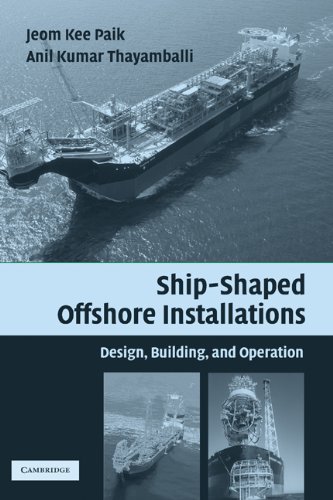

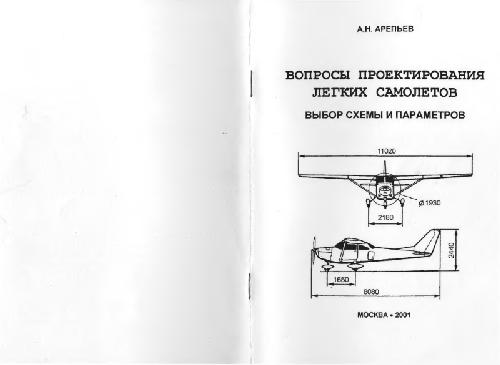
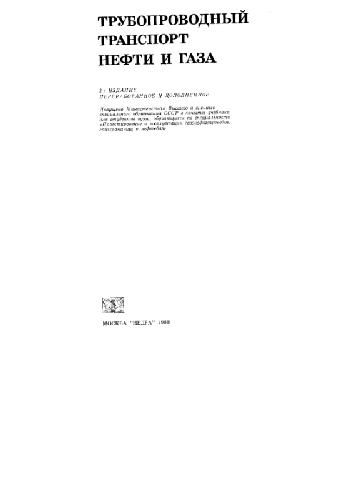

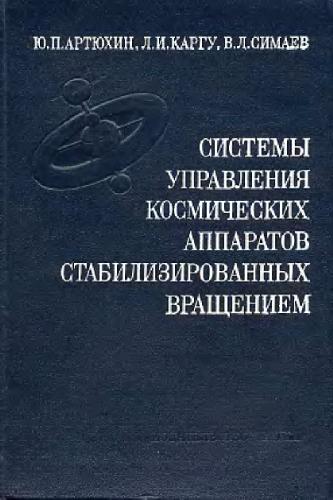
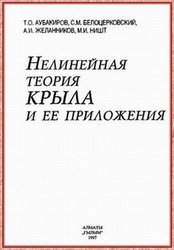
Reviews
There are no reviews yet.